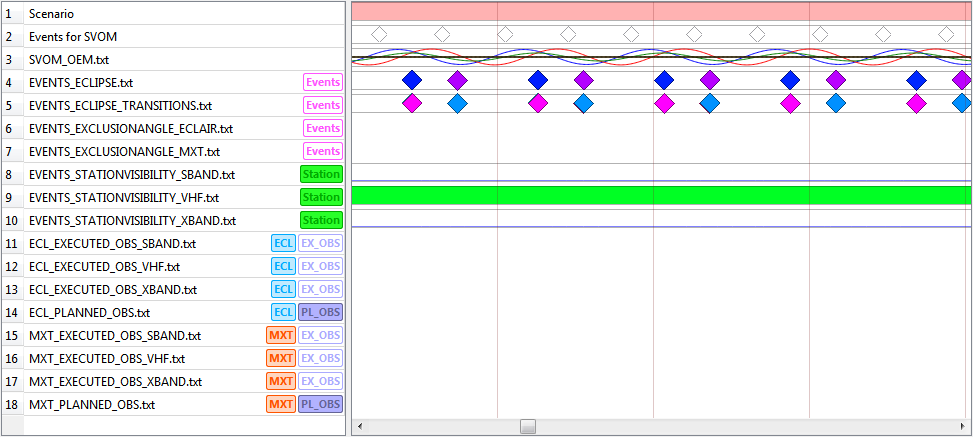We are very pleased to announce that VTS 3.4 “Moon” has just been released and is available for download at https://timeloop.fr/vts/download.

What’s new ?
Lunar missions
Exciting missions are coming for solar system moons (MMX, JUICE, …). VTS 3.4 adds support for missions to solar system moons and small bodies by allowing you to define mission ephemerides in the celestial body reference frame.

MMX position in Inertial Frame centered on Phobos during 10 terrestrial days.
On the left, 3D low altitude QSO, on the right, 2D low altitude QSO. [1] [2]
Martian Moon Exploration (MMX)

The Moon can be selected from the drop-down list. Note that both Moon and Earth must be added to the list of Celestial bodies.
Timeline badges
Dealing with multiple items in VTS Timeline can become a difficult task, specially when no file naming convention is defined! VTS 3.4 allows you to organize Timeline files with the help of badges.
Badges can be added to any Timeline file and can represent anything relevant to the mission (such as a category or a specific format). The contextual menu allows you to add/remove badges, rename or customize existing badges and also to use them as filters for the displayed files.

The way Badges are displayed can also be customized from VTS settings.

Display modes : No text, Always text, Text on hover
Station-Satellite visibility links
In 2017, VTS 3.1 added the possibility to display Station-Satellite visibility links in SurfaceView.

Station-Satellite links are displayed for satellites defined in the Station targets
In VTS 3.4 we continue to improve this feature by adding support in Celestia and ZenithView.

Customization is also improved as now you can change the font and the text that is displayed from the application initial states (i.e. VTS>Applications>ZenithView).
Much more !
- Ground station sensors can be defined with Azimuth-Elevation constraints
- Mode “Synchronize with system time” can be dynamically disabled and re-enabled from Broker
- PrestoPlot client upgraded to version v19.11
To see the complete list of features, improvements and bugfixes included in VTS 3.4 please read the full changelog.
Contact us !
As always we are interested in your feedback to keep improving VTS.
Take a look at our contact page to send us any comment, suggestion or question you might have.
[1] “Design of realistic trajectories for the exploration of Phobos”, Canalias et al., AIAA Space Flight Mechanics Meeting, Kissimmee (FL, USA), January 2018, https://arc.aiaa.org/doi/abs/10.2514/6.2018-0716
[2] “Mission Programming for the Mars Moon eXplorer Mission”, Astruc Maxime, 2019.



